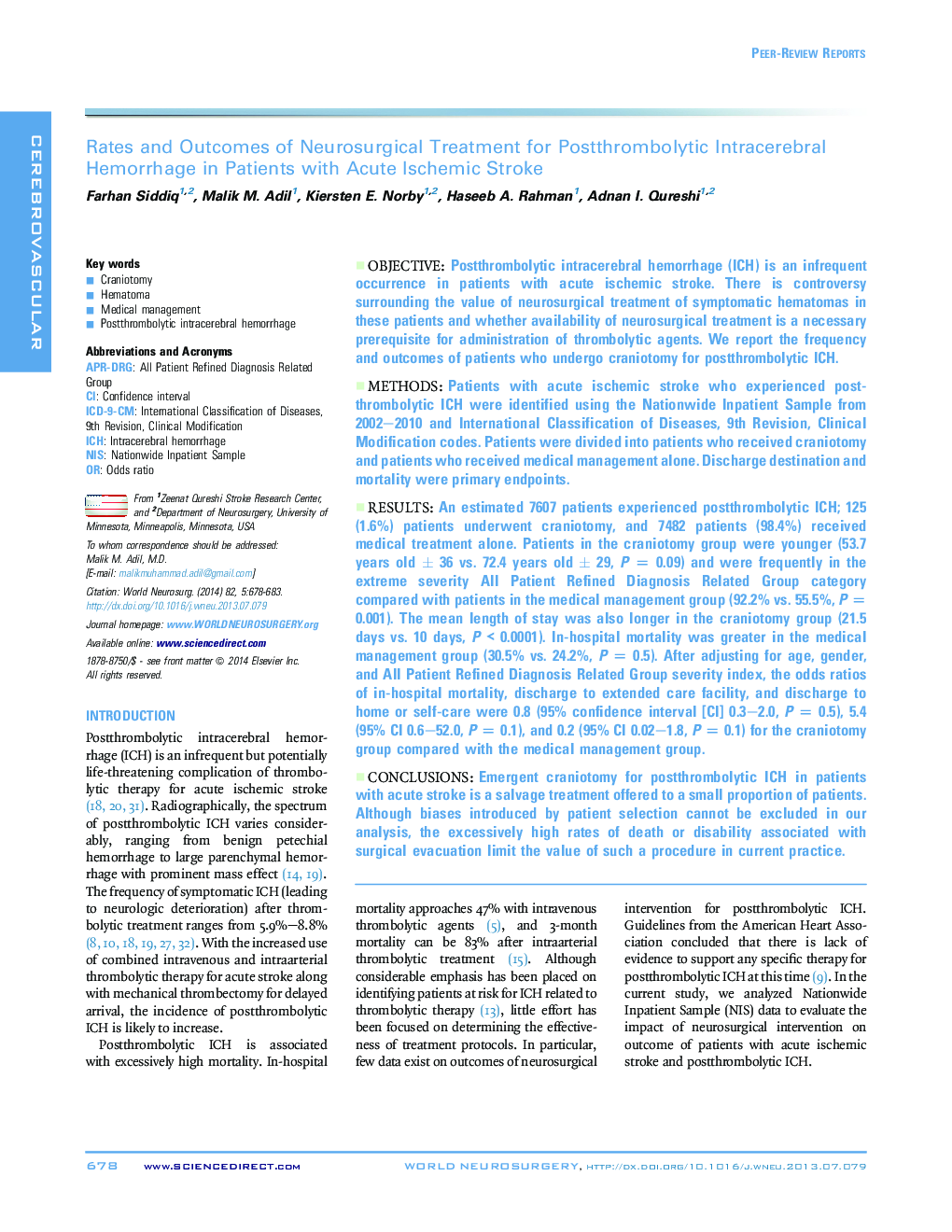| کد مقاله | کد نشریه | سال انتشار | مقاله انگلیسی | نسخه تمام متن |
|---|---|---|---|---|
| 3095313 | 1190909 | 2014 | 6 صفحه PDF | دانلود رایگان |
ObjectivePostthrombolytic intracerebral hemorrhage (ICH) is an infrequent occurrence in patients with acute ischemic stroke. There is controversy surrounding the value of neurosurgical treatment of symptomatic hematomas in these patients and whether availability of neurosurgical treatment is a necessary prerequisite for administration of thrombolytic agents. We report the frequency and outcomes of patients who undergo craniotomy for postthrombolytic ICH.MethodsPatients with acute ischemic stroke who experienced postthrombolytic ICH were identified using the Nationwide Inpatient Sample from 2002–2010 and International Classification of Diseases, 9th Revision, Clinical Modification codes. Patients were divided into patients who received craniotomy and patients who received medical management alone. Discharge destination and mortality were primary endpoints.ResultsAn estimated 7607 patients experienced postthrombolytic ICH; 125 (1.6%) patients underwent craniotomy, and 7482 patients (98.4%) received medical treatment alone. Patients in the craniotomy group were younger (53.7 years old ± 36 vs. 72.4 years old ± 29, P = 0.09) and were frequently in the extreme severity All Patient Refined Diagnosis Related Group category compared with patients in the medical management group (92.2% vs. 55.5%, P = 0.001). The mean length of stay was also longer in the craniotomy group (21.5 days vs. 10 days, P < 0.0001). In-hospital mortality was greater in the medical management group (30.5% vs. 24.2%, P = 0.5). After adjusting for age, gender, and All Patient Refined Diagnosis Related Group severity index, the odds ratios of in-hospital mortality, discharge to extended care facility, and discharge to home or self-care were 0.8 (95% confidence interval [CI] 0.3–2.0, P = 0.5), 5.4 (95% CI 0.6–52.0, P = 0.1), and 0.2 (95% CI 0.02–1.8, P = 0.1) for the craniotomy group compared with the medical management group.ConclusionsEmergent craniotomy for postthrombolytic ICH in patients with acute stroke is a salvage treatment offered to a small proportion of patients. Although biases introduced by patient selection cannot be excluded in our analysis, the excessively high rates of death or disability associated with surgical evacuation limit the value of such a procedure in current practice.
Journal: World Neurosurgery - Volume 82, Issue 5, November 2014, Pages 678–683
